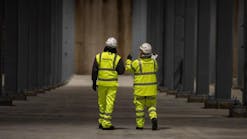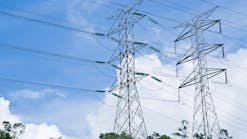For a prosperous and growing economy, New York needs abundant and competitively priced electricity. Energy efficiency, improved transmission and sufficient in-state generation power are essential to this goal.
To ensure sufficient in-state power, a “new capacity zone” (NCZ) is scheduled to go into effect on May 1. It encompasses areas of the Lower Hudson Valley and New York City, providing a new market structure and incentives to promote the building of new power plants in the region.
Developed in 2007 by New York’s Independent System Operator, the non-profit entity responsible for electric reliability, the NCZ has been approved by the Federal Energy Regulatory Commission (FERC), a federal agency with regulatory powers substantially strengthened in response to the historic, far-ranging 2003 blackout.
Opponents of the NCZ contend the following.
It should be delayed and studied further
The NCZ is often portrayed as being a new and even arbitrary proposal. In reality it has been carefully and exactingly developed over the past seven years. What is clear is that few power plants have come online in the Lower Hudson Valley and New York City over the past 15 years while many others are facing economic pressures to close.
Electricity markets are highly complicated and dynamic and must operate seamlessly, 24/7. In addition, electricity cannot be stored or inventoried. Thus, NYISO and FERC have taken into account exhaustive information on usage levels; plant openings and closings; reserve levels; transmission improvements and numerous other factors, in arriving at a determination to establish the NCZ.
New transmission lines are all that is needed
The energy highway proposal to bring power generated in upstate New York downstate is an important and beneficial concept, but it is not the silver bullet that solves the state’s energy problems. Furthermore, transmission lines are highly controversial and will face intense opposition in the communities they traverse and ultimately in the courts.
They are also very expensive, requiring long-term, highly capital intensive investments, and take years to be approved and built. Much of the energy highway, which will actually be a series of many different projects, will not be built for at least 10 years.
It is too expensive
In a September 25 press release, the New York Public Service Commission warned that residential customers could see a 5 to 10 percent increase in monthly electric bills.
These increases, which should be eliminated over time as more supply leads to lower electricity costs, can also be more than offset by political will. Thus, pinning the blame for high energy prices on FERC distracts from the more important and profound issues that must be addressed in broad and far-ranging discussions on how electricity costs can be dramatically cut in New York.
According to the U.S. Energy Information Administration, New York’s residential electricity costs were 68 percent higher than the national average in January, and 53 percent more than Pennsylvania. Importantly, this may be as much a result of increasing transmission costs, taxes, and arcane fees than changes in the wholesale price of electricity which has actually declined in New York over the past 10 years.
As noted by the Public Policy Institute of New York, an array of arcane electricity taxes and fees hit New Yorkers’ electricity bills hard, accounting for up to 25 percent of the bill. For example, the 18-a assessment, a two percent tax on electricity put into effect as a stopgap measure at the height of the financial crisis in early 2009, continues to be a tax burden to all utility customers.
Before companies commit hundreds of millions, if not billions of dollars to new plants, they need to have a clear, market pricing structure upon which to evaluate their decisions.
With the NCZ, New York will get back on the right path of encouraging the energy infrastructure investments needed to ensure reliable and competitively priced electricity.


